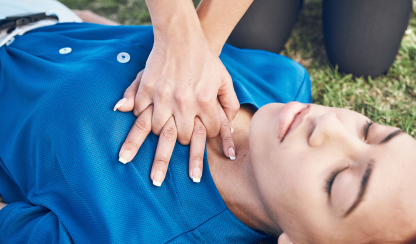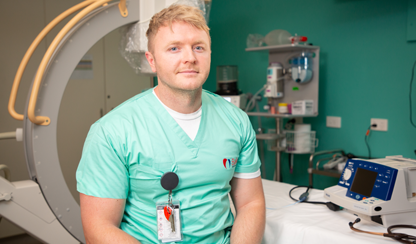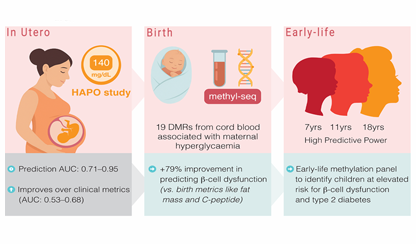12 January 2024
Media release

If you’re having a cardiac arrest, are you more likely to be helped by a bystander if you are a man or a woman? The Australian data is in…
New Australian data over two decades provides some surprising and reassuring results, highlighting that both men and women are likely to receive cardiopulmonary resuscitation (CPR) from a bystander.
The study by the Baker Heart and Diabetes Institute and Ambulance Victoria, published in Resuscitation Plus, bucks the trend amongst western nations, with countries including Sweden, the Netherlands, the United States, Canada and Denmark having consistently shown reduced rates of bystander CPR for women compared to men.
In fact, this Australian research, the largest study of its kind, also shows rates of bystander interventions increased significantly for women over time from 42.7% in 2002–03 to 71.3% in 2020–21.
The researchers analysed data from 2002 to 2021 from the Victorian Ambulance Cardiac Arrest Registry and examined the role of bystanders in more than 32,500 out-of-hospital cardiac arrests.
But it’s not all good news. The research did reveal that women were less likely than men to receive bystander defibrillation, with gender disparity increasing from 2010. Consistent themes in interviews with bystanders in other studies that might explain this relate to concerns around public exposure of women’s chests, causing injury, and misattribution of a woman experiencing an out-of-hospital cardiac arrest.
Lead researcher and cardiologist, Dr Liz Paratz, says this study, whilst very reassuring when it comes to bystander CPR for both genders, still highlights areas for improvement.
“It shows that strategies to promote bystander defibrillation in women experiencing a cardiac arrest in the community with a shockable rhythm should be a priority,” she says.
“Multiple studies across Japan, the Netherlands and the United States have reported that female out-of-hospital cardiac arrest patients are less likely to have automatic external defibrillator (AED) pads applied to even ascertain cardiac rhythm in the first instance.
And studies in Asian countries, where bystander CPR rates are sometimes higher in women compared with men, highlight the same did not apply for defibrillation, with one large Japanese study showing men were almost twice as likely to receive bystander defibrillation.
‘We know there may be some reasons why bystanders may not perform defibrillation on women but it is critical that we address these issues as they could mean the difference between life and death,” Dr Paratz says.
She says steps to address this could involve pursuing equal recruitment of women volunteers for CPR training, as well as using female mannequins with visible female anatomy to practise pad placement and defibrillation.
“When it comes to defibrillation, people should keep in mind that in many cases, it is simply a matter of turning on the power and the Automated External Defibrillator (AED) will coach you through the rest of the steps with visual and/or audio prompts,” she says.
“If a person's heart is beating normally, they don't need a shock. The AED will check this. It won't give the person an electric shock unless it's necessary. So, you can't harm someone by using an AED. And if someone’s heart has stopped, please don’t be put off by embarrassment from getting defibrillator pads on their chest – it’s their best shot at surviving.”
Ambulance Victoria Paramedic and Director of Research and Evaluation, Dr Ziad Nehme, says the study shows that more work needs to be done to bridge the gap in community care for women suffering a cardiac arrest.
“The initiatives that we’ve used to enhance rates of community CPR over the last two decades have clearly been effective, but we now need to intensify our focus on bystander defibrillation.
“One of the important ways the community can help is to join GoodSAM. GoodSAM is a life-saving smartphone app that connects Victorians in cardiac arrest with members of the community who are willing to start CPR and apply an AED in the critical minutes before paramedics arrive.”
Out-of-hospital cardiac arrest is one of the major causes of death worldwide, affecting almost 4 million people globally each year. Every day, around 20 Victorians will suffer a cardiac arrest and only 1 in 10 survive. As with many disease conditions, it is an area in which women often experience poorer management and outcomes.
Bystander interventions include bystander CPR, application of AED pads and bystander defibrillation if a shockable rhythm is identified. Early intervention by bystanders has been shown to be superior to subsequent interventions by first responders or paramedics and may result in approximately a doubling in out-of-hospital cardiac arrest survival.
For further information or to organise interviews please contact:
Tracey Ellis
T: 03 8532 1514
M: 0433 781 972
E: tracey.ellis@baker.edu.au





